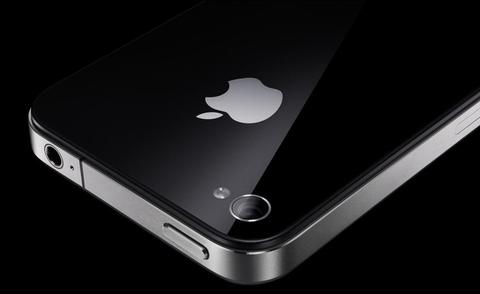Apple issue iPhone 4 signalling problem statement, but is their response good enough?

Bought an iPhone 4? Then you may well be one of the seemingly thousands who have been experiencing poor reception levels and signal issues. It may well be being heralded as the greatest smartphone of all time, but right now it’s not really performing that well as just a plain old mobile.
Apple have now issued a full statement concerning the problem after an investigation into the problem. Their findings may well prove a little underwhelming for some users.
Claiming that their iPhone 4 loses reception when gripped in a particular way (and that that problem is shared by competing handsets by other manufacturers), they stand by the fact that users most affected are likely in a low signal strength area.
“But I have five full bars of reception?” I hear you say. Well, apparently Apple now believe that they’ve been too generous in calculating local signal strength in the past, and that the problem is a coverage issue rather than a hardware one.
There’s a whiff of Orwellian “2+2=5 if Apple say so” here. They are said to be adopting a new formula for calculating signal strength in an upcoming software update, but have we really had similar complaints with their old method before this new piece of hardware? Likewise, increasing the illustrated size of signal bars 1, 2 and 3 as they plan to do seems to be an exercise in smoke and mirrors, a “glass half full” approach to only mediocre reception.
But you can make your own judgements if you like by reading the whole statement, reproduced verbatim below:
July 2, 2010
Letter from Apple Regarding iPhone 4
Dear iPhone 4 Users,
The iPhone 4 has been the most successful product launch in Apple’s history. It has been judged by reviewers around the world to be the best smartphone ever, and users have told us that they love it. So we were surprised when we read reports of reception problems, and we immediately began investigating them. Here is what we have learned.
To start with, gripping almost any mobile phone in certain ways will reduce its reception by 1 or more bars. This is true of iPhone 4, iPhone 3GS, as well as many Droid, Nokia and RIM phones. But some users have reported that iPhone 4 can drop 4 or 5 bars when tightly held in a way which covers the black strip in the lower left corner of the metal band. This is a far bigger drop than normal, and as a result some have accused the iPhone 4 of having a faulty antenna design.
At the same time, we continue to read articles and receive hundreds of emails from users saying that iPhone 4 reception is better than the iPhone 3GS. They are delighted. This matches our own experience and testing. What can explain all of this?
We have discovered the cause of this dramatic drop in bars, and it is both simple and surprising.
Upon investigation, we were stunned to find that the formula we use to calculate how many bars of signal strength to display is totally wrong. Our formula, in many instances, mistakenly displays 2 more bars than it should for a given signal strength. For example, we sometimes display 4 bars when we should be displaying as few as 2 bars. Users observing a drop of several bars when they grip their iPhone in a certain way are most likely in an area with very weak signal strength, but they don’t know it because we are erroneously displaying 4 or 5 bars. Their big drop in bars is because their high bars were never real in the first place.
To fix this, we are adopting AT&T’s recently recommended formula for calculating how many bars to display for a given signal strength. The real signal strength remains the same, but the iPhone’s bars will report it far more accurately, providing users a much better indication of the reception they will get in a given area. We are also making bars 1, 2 and 3 a bit taller so they will be easier to see.
We will issue a free software update within a few weeks that incorporates the corrected formula. Since this mistake has been present since the original iPhone, this software update will also be available for the iPhone 3GS and iPhone 3G.
We have gone back to our labs and retested everything, and the results are the same– the iPhone 4’s wireless performance is the best we have ever shipped. For the vast majority of users who have not been troubled by this issue, this software update will only make your bars more accurate. For those who have had concerns, we apologise for any anxiety we may have caused.
As a reminder, if you are not fully satisfied, you can return your undamaged iPhone to any Apple Retail Store or the online Apple Store within 30 days of purchase for a full refund.
We hope you love the iPhone 4 as much as we do.
Thank you for your patience and support.
Apple


2 comments
Yeah!! I have come to know that Apple is hiring signal engineers to fix this problem…
i like iphone so much,but i have no money to buy one.
Comments are closed.